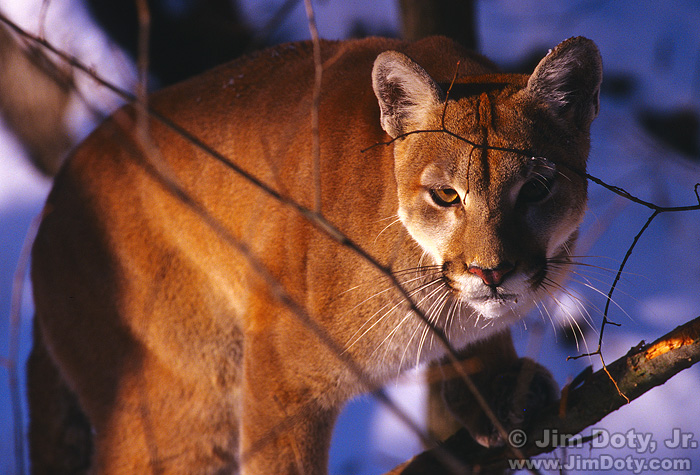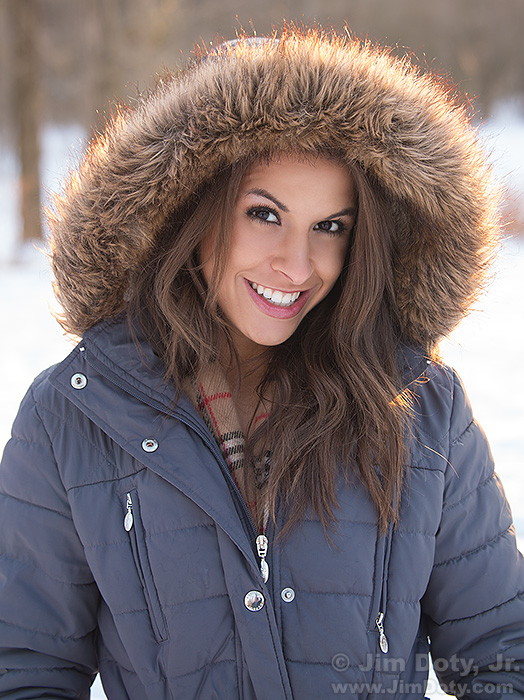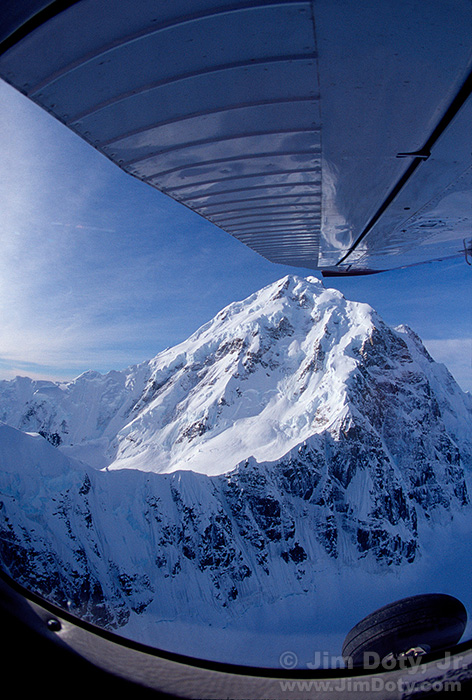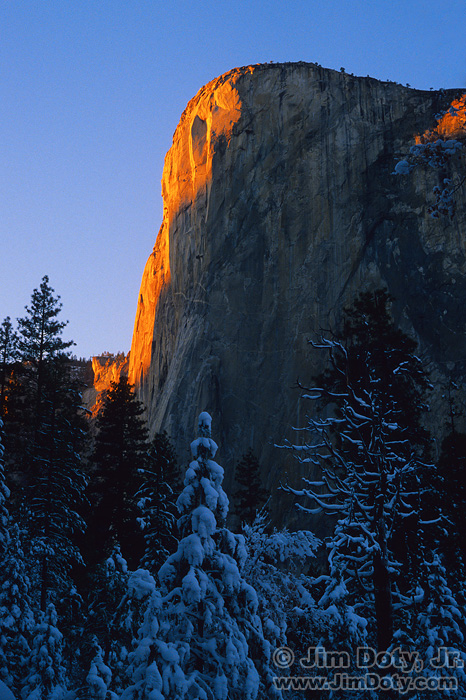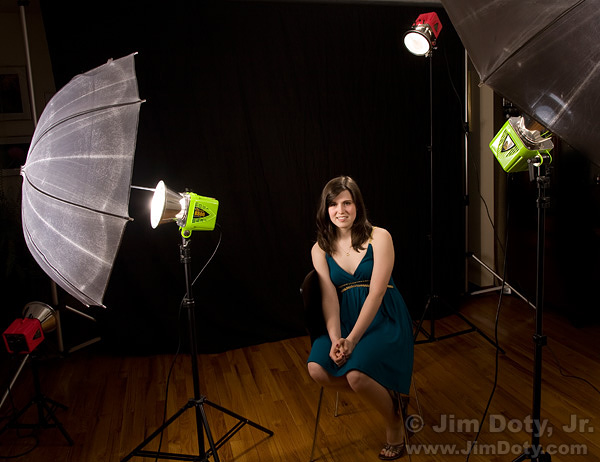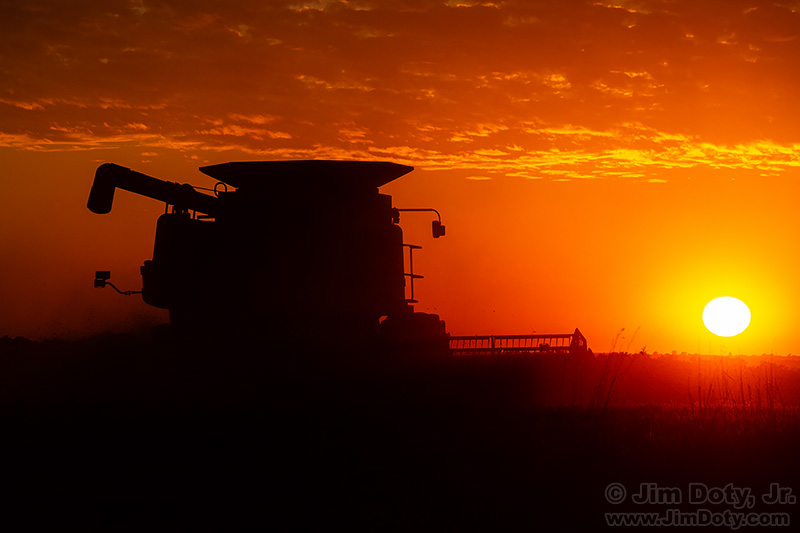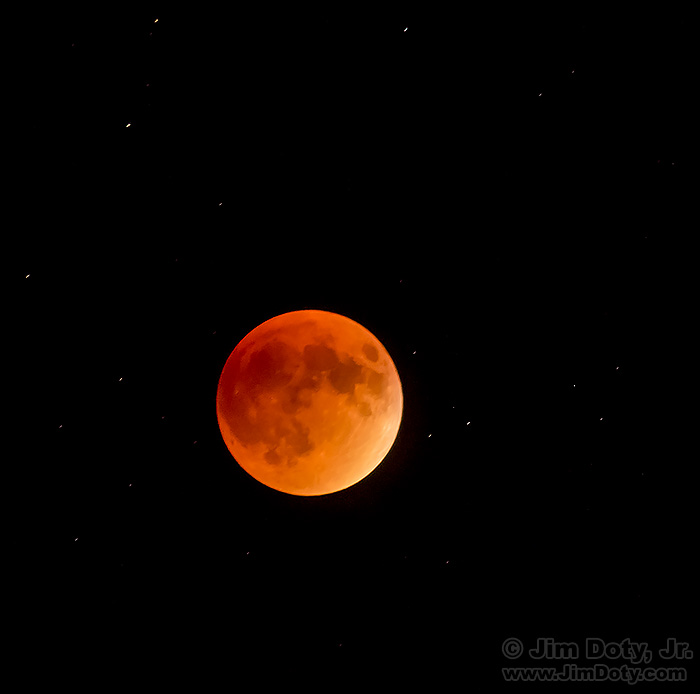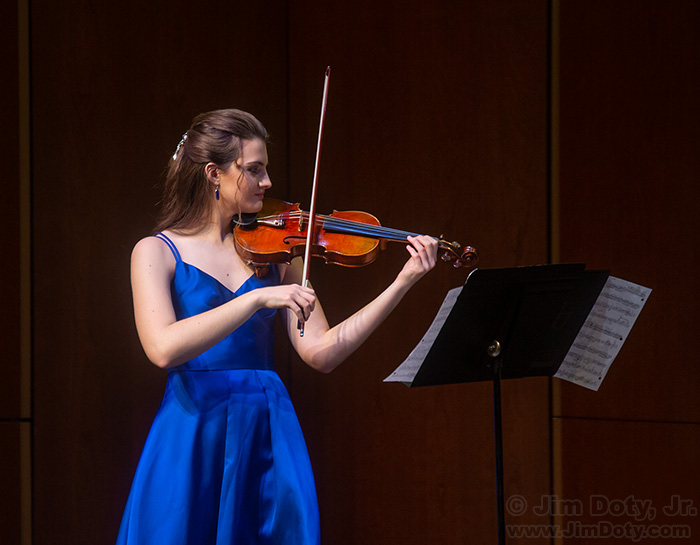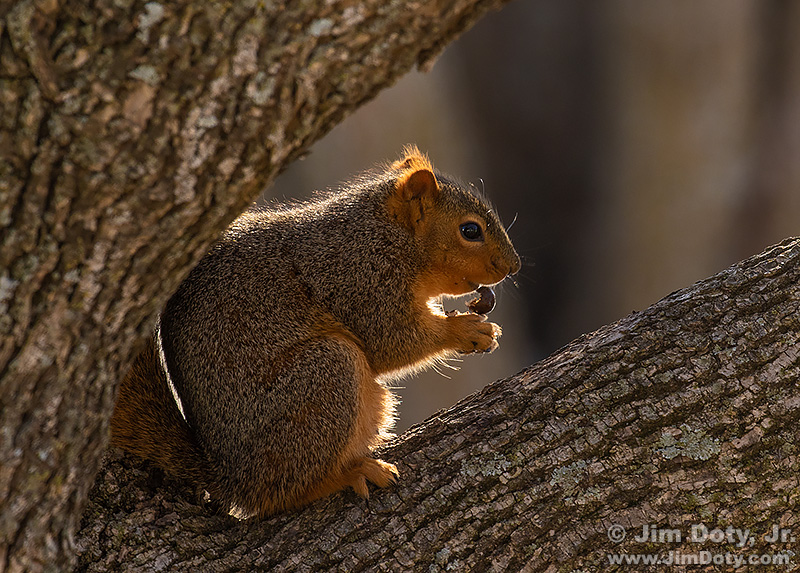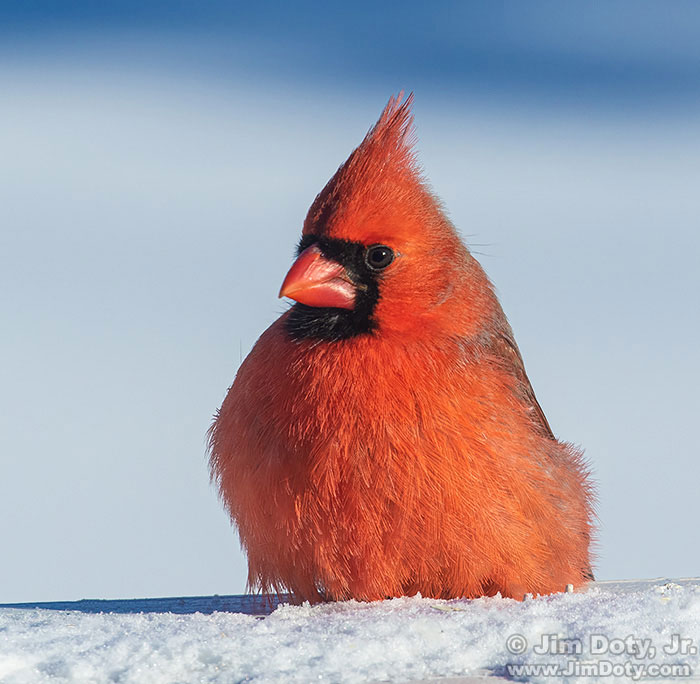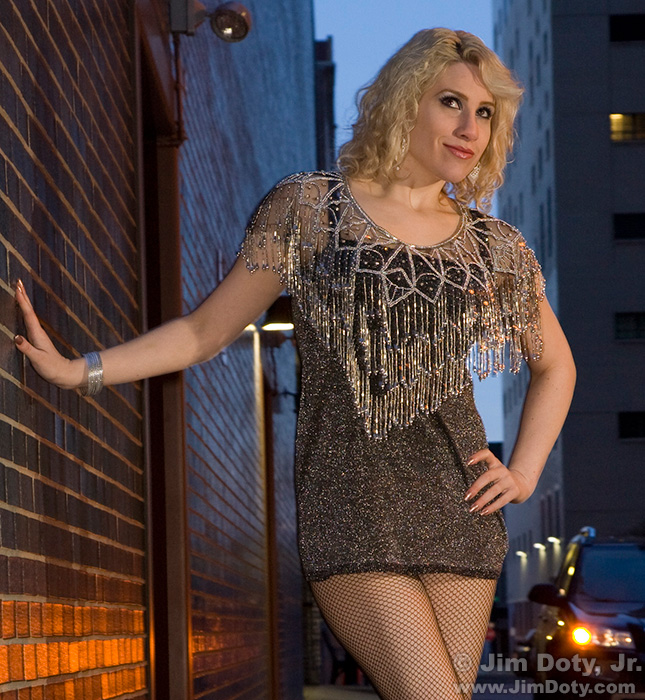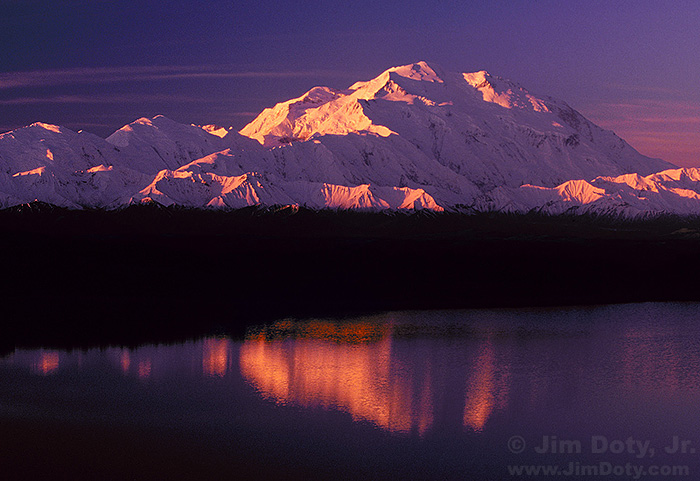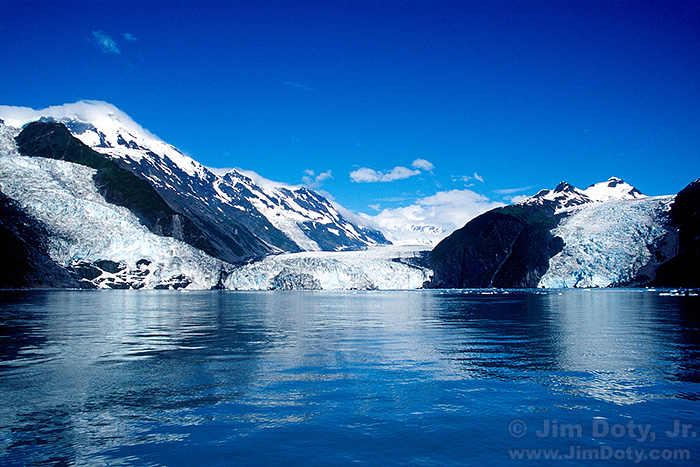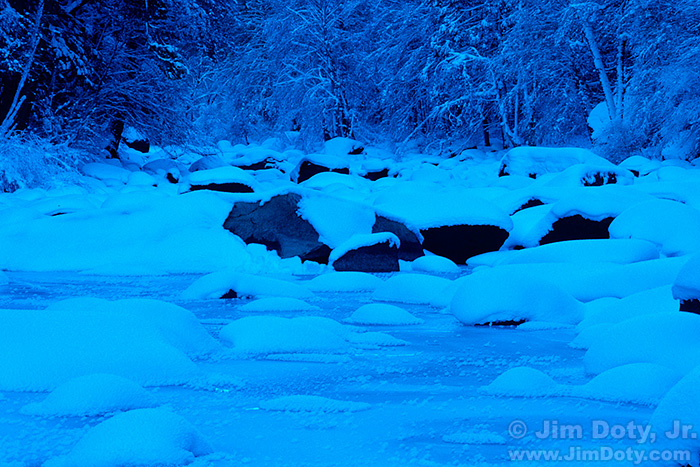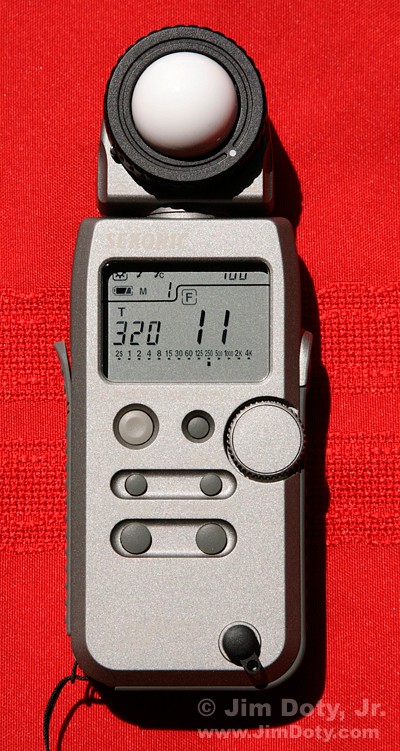Most wildlife are medium to dark in tone, making them a challenge to meter properly in the bright, white tones of winter. If you trust one of your camera’s automatic exposure modes, the odds are good you won’t get the best exposure. If you switch over to manual exposure and make the right decisions, you can get great exposures and better quality photos (more about that later).
Category Archives: Metering
Metering Wildlife in the Snow, Part One
Metering dark toned wildlife in the snow is a major exposure challenge. It is usually best to avoid large “burned out” areas (washed out, featureless white) in a nature or landscape photograph, but with properly exposed snow, the wildlife can be so dark as to lose all texture. On other hand, metering for the wildlife can burn out the snow. So what do you do? And what about the complications of metering white animals?
Metering People in the Snow
The white snow in a winter scene can and often does fool a camera meter into underexposing a portrait, so here are the steps to take to get the right exposure. I throw in a few portrait suggestions too.
Metering Daytime Winter Scenes
Metering for scenes with a lot of snow can be tricky since the bright snow fools the camera meter. I see a lot of winter photos with gray snow, which means the camera meter did exactly what it was designed to do. The solution is quite simple provided you know what to do.
How To Series: Winter Photography
In addition to all of the usual photographic challenges, winter provides some extra complications, especially in terms of metering. So I began this series of articles on winter photography. Check out the links below. The articles will help you meet the unique challenges of winter photography. So get out there, have fun, and create some great winter images!
AlienBees: High Quality, Economical Studio Lights
For the best combination of quality and price, it is hard to beat AlienBees studio lights. I’ve been using AlienBees in my studio for over 10 years, and like so many other photographers, I’ve been singing their praises. It would be hard to find the same quality for less money.
Buyer’s Guide: Recommendations For The Best Photography Equipment, Software, Books, Magazines, DVDs, Online Photo Labs, and More
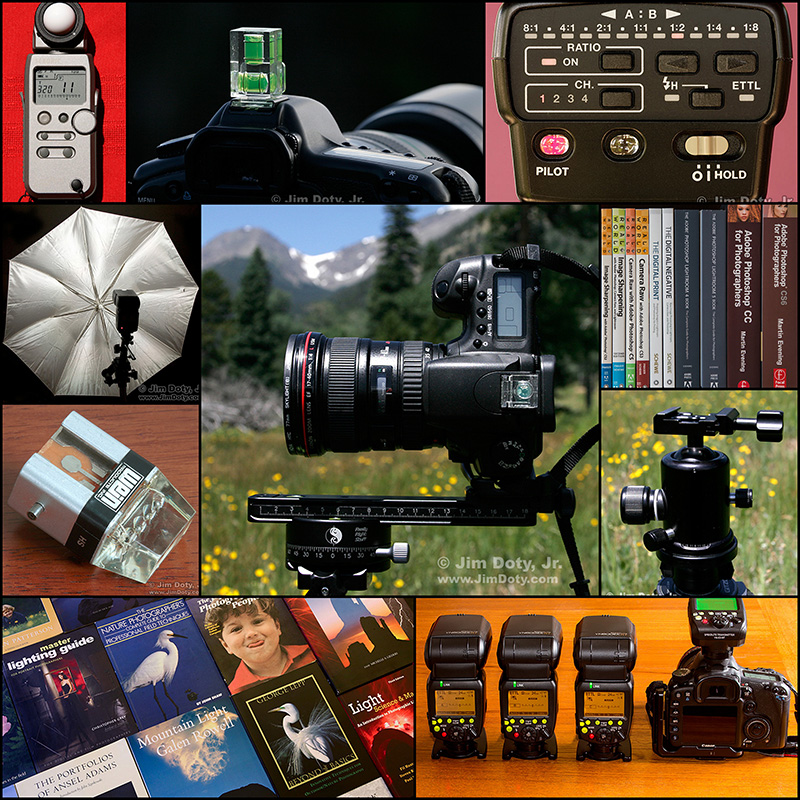 Welcome to my online buying guide for photographers. With over 75 articles it is one of the most comprehensive buyer’s guides on the web.
Welcome to my online buying guide for photographers. With over 75 articles it is one of the most comprehensive buyer’s guides on the web.
I get lots of photo questions, and many of them begin with “What is the best . . . .” They usually come from photographers or someone who is shopping for a photographer.
My “best of the best” series recommends the best photo gear, accessories, software, books, DVDs, online photo labs, and a whole lot more. Thanks to the information in these articles I get emails from photographers thanking me for saving them time, frustration, and a lot of money.
This article is published annually in November with regular updates. Most recent update: November 17, 2023.
Soybean Harvest at Sunset
A couple of weeks ago a friend of mine asked if I would get some images when the time to harvest soybeans came around. I told her the perfect image would be at sunrise or sunset with a nice sky and the combine kicking up some dust. When it was time for the harvest we had two cloudy days which would make for boring images. Finally, on the third day the clouds were breaking up in the afternoon and it looked more promising. I hopped in my car and drove to the harvest location.
How To Photograph the Super Flower Blood Moon Eclipse, May 26, 2021
Don’t miss it. This is the only total eclipse of 2021 and it happens this Wednesday May 26 (and begins May 25 if you live in Hawaii). This article will show you how to photograph it. Continue reading
How to Photograph A Recital and Other Stage Performances
The first thing to do is to ask permission ahead of time. Some places do not allow photography during the performance or they limit the number of photographers. In this case, Beth asked me to photograph her recital and I was the official photographer. One of the keys to photographing an event is not to become a serious distraction from the main event. That means not doing a lot of wandering around, and certainly not getting in front of people who are watching the event. Be as discreet as possible. If you need to move during a performance, if at all possible do it during the applause between numbers.
Backlit Squirrel: Making the Most of Rim Light
Violinist in the Snow
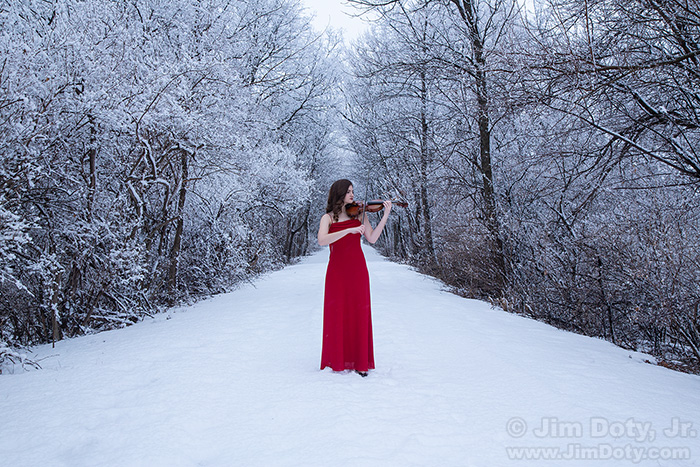
This is one of my all time favorite winter images. On a prior photo shoot, Beth and I went out into the cold and snow to create images. She played her violin while I took pictures. It was her first time shooting in the cold and snow and she was a real trooper. For that shoot she wore her long black concert dress. The snow melted not long after that, but we decide if another day came along with the right conditions we wanted to shoot in the now again.
Northern Cardinal in the Snow
House Finch in the Snow
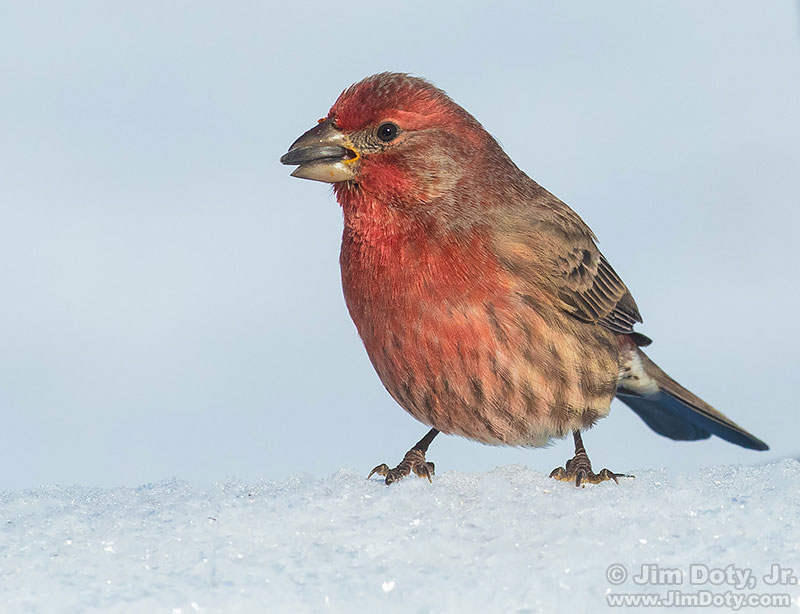
Thanks to the weather and the recommendations from U.S. medical experts that this is not the time to be traveling, I have been doing much more photography than usual of the birds visiting our bird feeders. This male House Finch had just grabbed a black oil sunflower seed and was getting ready to eat it.
Snow Covered Squirrel
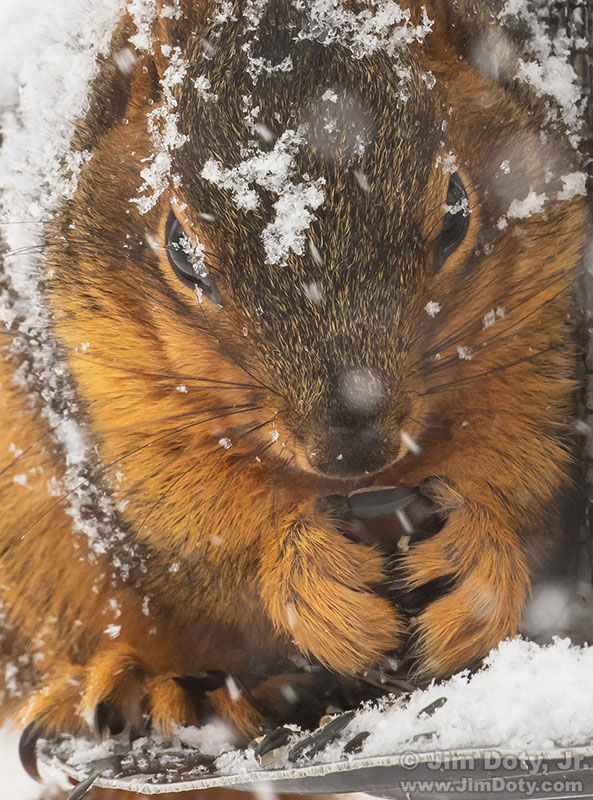
I looked out our kitchen window and spotted this squirrel chowing down at one of our bird feeders. I grabbed a camera and lens, slowly opened the kitchen window and created several images. This is one of my favorites. I especially like the snowflakes on the fur and little ice-like crystals in the whiskers and eyelashes.
How to Photograph a Musician in the Cold and Snow
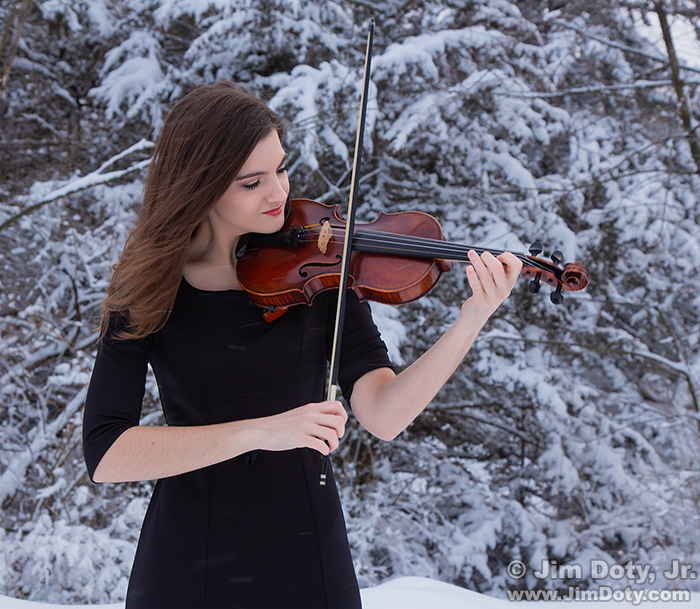
It was my happy privilege to do winter portraits of Beth Presler who is a superb violinist. This article has suggestions for photographing any musician on a cold, snowy winter day.
How To Work With A Model (or Anybody Else) When The Windchill is 4°
You would think a windchill of 4° Fahrenheit (-16°C) would be too cold for a photo shoot, but not with some models. We booked this January shoot weeks in advance so we knew it would be cold, but we had no idea how cold until the day arrived. Here’s the story behind this image and how to work with a model (or anybody else) when it is so cold.
The Sunny f16 Rule Isn’t Reliable in Winter
The Sunny f16 rule is really useful on bright sunny days in the spring, summer, and fall, but you can’t rely on it for accurate exposures on bright, snowy winter days. It will often lead you astray and you will have seriously blown out highlights. There are much more accurate ways to meter in the winter.
Testing Your Camera’s Snow Exposure Latitude
The “snow exposure latitude” for every camera is different. You won’t find it in your camera’s manual but it is easy to determine with a do-it-yourself test. Why does it matter? If you don’t know the snow exposure latitude for your camera and how to apply it to your images, the color and quality of your winter photos will suffer.
Metering Nighttime Winter Scenes
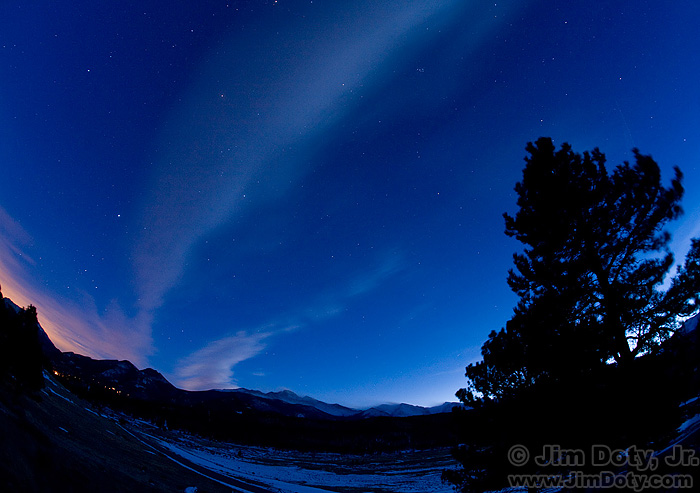
Twilight, Rocky Mountain National Park. Sirius, Canis Major, Orion, Taurus, the Hyades star cluster, and the Pleiades star cluster are all visible in the fading light. Click for a larger version.
You can photograph the night sky year around, but winter brings an added bonus: SNOW! When you don’t have the benefit of moonlight, most of the year land forms a dark to black silhouetted skyline against the night sky. In winter you have the possibility of including the highly reflective snow. You can see both in this photo. Any place not covered with snow is very dark to black. Having reflective snow is why winter is the favorite time of year for a lot of photographers to go out and photograph the night sky.
Metering Evening Winter Scenes
Just like metering daytime winter scenes, the key to metering evening winter scenes is knowing what to meter and deciding how much exposure compensation to use.
Metering Wildlife in the Snow, Part Two
Most wildlife are medium to dark in tone, making them a challenge to meter properly in the bright, white tones of winter. If you trust one of your camera’s automatic exposure modes, the odds are good you won’t get the best exposure. If you switch over to manual exposure and make the right decisions, you can get great exposures and better quality photos (more about that later).
Metering Wildlife in the Snow, Part One
Metering dark toned wildlife in the snow is a major exposure challenge. It is usually best to avoid large “burned out” areas (washed out, featureless white) in a nature or landscape photograph, but with properly exposed snow, the wildlife can be so dark as to lose all texture. On other hand, metering for the wildlife can burn out the snow. So what do you do? And what about the complications of metering white animals?
Metering People in the Snow
The white snow in a winter scene can and often does fool a camera meter into underexposing a portrait, so here are the steps to take to get the right exposure. I throw in a few portrait suggestions too.
Metering Daytime Winter Scenes
Metering for scenes with a lot of snow can be tricky since the bright snow fools the camera meter. I see a lot of winter photos with gray snow, which means the camera meter did exactly what it was designed to do. The solution is quite simple provided you know what to do.
How To Series: Winter Photography
In addition to all of the usual photographic challenges, winter provides some extra complications, especially in terms of metering. So I began this series of articles on winter photography. Check out the links below. The articles will help you meet the unique challenges of winter photography. So get out there, have fun, and create some great winter images!
Buyer’s Guide: Recommendations For The Best Photography Equipment, Software, Books, Magazines, DVDs, Online Photo Labs and More
 Welcome to my online buying guide for photographers. With over 75 articles it is one of the most comprehensive buyer’s guides on the web.
Welcome to my online buying guide for photographers. With over 75 articles it is one of the most comprehensive buyer’s guides on the web.
I get lots of photo questions, and many of them begin with “What is the best . . . .” They usually come from photographers or someone who is shopping for a photographer.
My “best of the best” series recommends the best photo gear, accessories, software, books, DVDs, online photo labs, and a whole lot more. Thanks to the information in these articles I get emails from photographers thanking me for saving them time, frustration, and a lot of money.
The Best Incident Light Meters
There’s no question that in some complex metering situations, an incident light meter can be quicker, faster, simpler, and more accurate than the meter in your camera. Many incident light meters can also measure light from an electronic flash, a huge bonus when you are using a flash in the manual mode.
Buyer’s Guide: Recommendations For The Best Photography Equipment, Software, Books, Magazines, DVDs, Online Photo Labs and More
 Welcome to my online buying guide for photographers. With over 75 articles it is one of the most comprehensive buyer’s guides on the web.
Welcome to my online buying guide for photographers. With over 75 articles it is one of the most comprehensive buyer’s guides on the web.
I get lots of photo questions, and many of them begin with “What is the best . . . .” They usually come from photographers or someone who is shopping for a photographer.
My “best of the best” series recommends the best photo gear, accessories, software, books, DVDs, online photo labs, and a whole lot more. Thanks to the information in these articles I get emails from photographers thanking me for saving them time, frustration, and a lot of money.
This article is published annually in November with regular updates. Most recent update: February 10, 2021.
Lyn Marie, Backlit Portrait
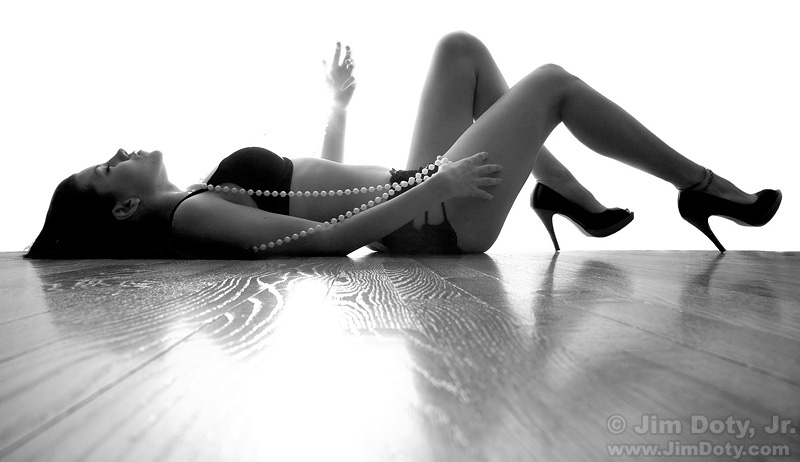
Back lighting isn’t the usual way to do portraits, so it provides a nice change of pace.

